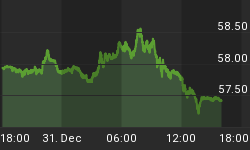The eurozone remains under pressure, and the euro currency could soon test the lower Bollinger Band at 1.2740. On the contrary, in the US, economic numbers are positive, bond yields are increasing and the US dollar is supported, for now.
ECB ready to cut again
Last week, European Central Bank (ECB) President Mario Draghi confirmed that the ECB will keep interest rates low for a longer period of time. Mr. Draghi did not provide any timeline for ECB policy. He stated only that inflation, economic growth and monetary activity will be watched closely. In Europe, the political struggle stays tense. In fact, after Greece, the Portuguese government is on the verge of collapse, after the minister of finance and the foreign minister left the political coalition. There is a strong division over which policy direction to take. On one side, there is the need to wait for the results of the austerity measures that have been implemented. On the other, politicians, pressured by an unsatisfied electorate, want to move forward. In Portugal, the unemployment rate is almost 18%, and bond yields have been skyrocketing since the recent resignations. Nevertheless, there is still hope that economic activity will upturn by the end of this year.
Credit is still low
The Organization for Economic Cooperation and Development (OECD) has estimated that the Portuguese growth rate, currently at 0.5%, could rise to 3.5% by 2020. The recent spike in confidence in the eurozone can be seen as a sign that the recession is almost over in Europe; however, growth should remain weak for some time. Credit is still low, and the spillover effects of the political crises in Greece and Portugal might reach other nations. The ECB will cut rates further if economic conditions deteriorate. Other non-conventional measures might also be implemented. In the short-term, the euro could decline to 1.2740 and, eventually, to 1.2640.
US yields rising
In the US, yields on 10-year notes have continued to appreciate, supported by additional improvement in the labor market; these yields could reach 4.00% between 2013 and 2014. For the second straight month, private and non-farm payroll numbers rose more than 200,000. The median length of unemployment is now about 16 weeks, down from about 18 weeks in March, as some "discouraged" workers are returning to the labor force. The number of workers leaving their jobs is also increasing, and the unemployment rate remains steady at 7.6%. The Fed wants it to decline toward 7.0% before changing the current monetary policy. These good numbers should persist throughout the year. In June, the ISM manufacturing index, supported by new orders and components for production, bounced back above the important benchmark of 50. Global risks are always present, but they should not alter the course of events this year.
The S&P 500 Index is again targeting the resistance line at 1640/1660. These levels correspond to the higher Bollinger Band and should hold at first touch. A breakout above May highs is possible, but not probable for now as stocks are entering what historically tends to be the weakest period of the year. Over the past 40 years, the seasonal trend has shown the tendency to continue until September.
















